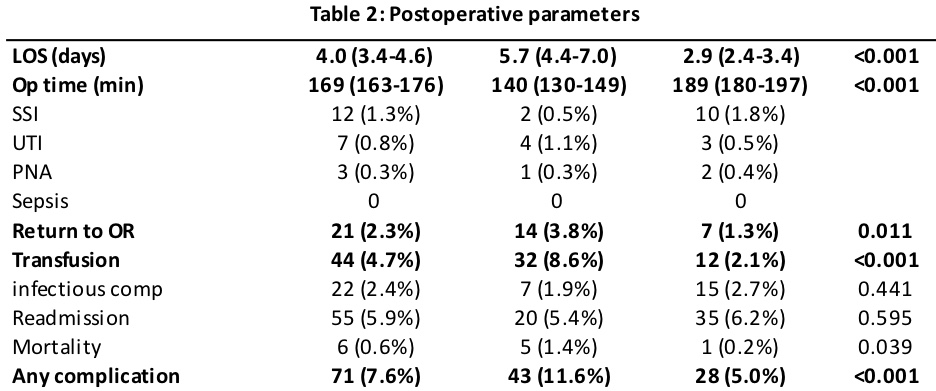Comparing perioperative complications of open vs. minimally invasive total nephrectomy:Results from pediatric NSQIP
Da David Jiang, MD, Ann Martinez Acevedo, BS, Casey Seideman, MD.
OHSU/Doernbecher, Portland, OR, OR, USA.
Introduction:
Minimally invasive surgery (MIS) is commonly used in pediatric urology. There are no multi-institutional large database studies comparing the two approaches for non-oncologic pediatric simple nephrectomy. Our goal is to determine perioperative complications of simple nephrectomy comparing MIS to the open approach.
Methods:
A retrospective cohort study from 2013 to 2017 was conducted using the American College of Surgeons National Surgical Quality Improvement Program Participant User File (ACS NSQIP PUF). Pediatric patients undergoing total simple nephrectomy for non-malignant diseases were identified and compared. Baseline demographics between the two groups and perioperative parameters were compared using univariable analysis. A multivariable logistic regression analysis model using preoperative factors including MIS was used to determine associations with complications.
Results:
There were 933 patients identified in the study population. Overall, 371 (40%) underwent open nephrectomy compared to 562 (60%) that had MIS nephrectomy. Baseline demographics (Table 1) revealed that MIS patients were statistically significantly associated with: older age, higher body mass index (BMI), female sex, white race, lower hemolytic disorder, lower preoperative transfusion. Peri-operative parameters between the two groups revealed that MIS was associated with a shorter hospital stay, a longer operative time, less return to the operative room (OR), less transfusions and less overall complications. On multivariable regression analysis (Table 3), MIS was independently associated with decrease complications (OR 0.5, p=0.035). Additionally other patient factors were associated with increased risk of any complications: hemolytic disorder (OR 5.8, p<0.001), preoperative steroid use (OR 4.9, p=0.002), major or severe cardiac risk (OR 5.3, p<0.001).
Conclusions:
MIS utilization accounted for just over 60% of total benign nephrectomy in the NSQIP database. MIS patients was associated with older white patients with higher BMI. Although the most of the MIS and open patients were similar in terms of preoperative comorbidities, the MIS patients were associated with lower hemolytic disorder, lower preoperative transfusion and more elective procedures. The MIS approach was associated with a 3-day shorter hospital but with a longer operative time of approximately 49 minutes. Finally, the MIS approach was independently associated with decreased overall complications when taking into account preoperative comorbidities.



Back to 2019 Abstracts




